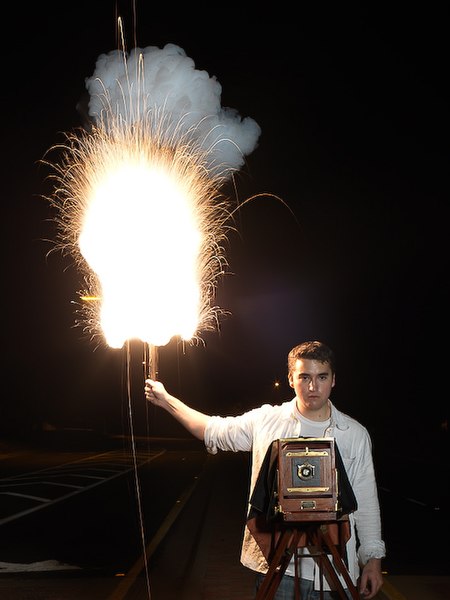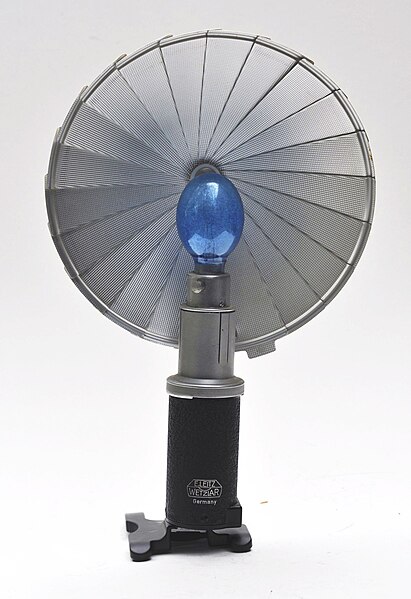A flash is a device used in photography that produces a brief burst of light at a color temperature of about 5,500 K to help illuminate a scene. A major purpose of a flash is to illuminate a dark scene. Other uses are capturing quickly moving objects or changing the quality of light. Flash refers either to the flash of light itself or to the electronic flash unit discharging the light. Most current flash units are electronic, having evolved from single-use flashbulbs and flammable powders. Modern cameras often activate flash units automatically.
The high-speed wing action of a hummingbird hawk-moth is frozen by flash. The flash has given the foreground more illumination than the background. See Inverse-square law.
Demonstration of a magnesium flash powder lamp from 1909
Vintage AHA smokeless flash powder lamp kit, Germany
Ernst Leitz Wetzlar flash from 1950s
Color temperature is a parameter describing the color of a visible light source by comparing it to the color of light emitted by an idealized opaque, non-reflective body. The temperature of the ideal emitter that matches the color most closely is defined as the color temperature of the original visible light source. Color temperature is usually measured in kelvins. The color temperature scale describes only the color of light emitted by a light source, which may actually be at a different temperature.
The house above appears a light cream during midday, but seems to be bluish white here in the dim light before full sunrise. Note the color temperature of the sunrise in the background.





